The best peach varieties for growing in Central Russia, planting and care
Peach belongs to the genus Plum of the Rose family. This is the name of the tree and its fruit of the same name. The wild form of the peach was first discovered in India. Classic peach varieties grow in Italy, southern Russia, the Caucasus and Central Asia. Until recently, the cultivation of a peach in the territory of Central Russia seemed almost impossible. With the advent of hybrid varieties adapted for growth in Russian regions, the cultivation of the peach tree has become a reality.
Features of growing peaches in Central Russia
The middle zone is the central European part of the country, which is characterized by a temperate continental climate. The main part of the region is located on the territory of the East European Plain, the southern territories are occupied by the Central Russian Upland. The regions are characterized by frosty snowy winters and warm, humid summers. In winter, the air temperature can drop below -20 degrees, in summer the thermometer rises to +30.
The main trick used to grow peach trees in areas with harsh climates is additional shelter during the winter.
Suitable varieties
The cultivation of peach trees in the Middle Lane has become possible due to the selection selection that has been carried out by scientists over the past decades. Several varieties were bred that are resistant to frost and have increased adaptability.
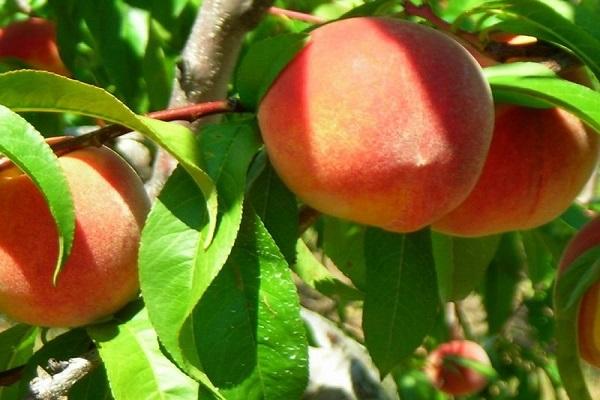
Red Haven
The hybrid has been recommended for the central regions of the country since 1992. The tree grows up to 5 meters, the crown consists of dark green large leaves with a glossy surface. Single flowers are collected in the bell-shaped type of inflorescences, during flowering they acquire an orange tint.
The fruits of the Red Haven variety are classified as large, the weight can reach 150-160 grams. The shape of the fruit remains round until fully ripe. They have a thin skin, juicy pulp. Brief characteristics of the variety:
- resistant to frost up to -25 degrees;
- drought resistant;
- does not need additional pollination;
- fruits can be stored for a long time and can be transported.
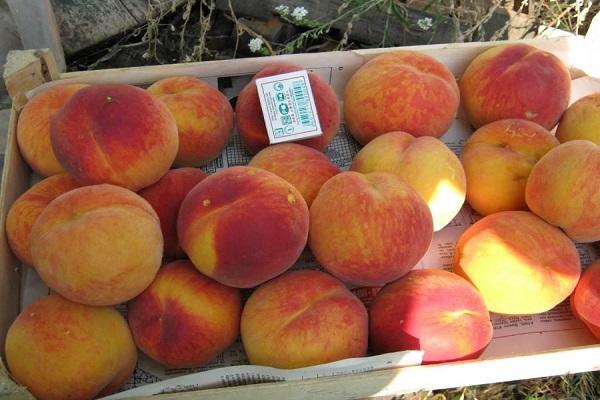
Kiev early
The hybrid was created in the middle of the last century, adapted to the harsh climate.
The tree has a ball-shaped crown, the size of the fruits is medium, peaches weigh up to 100 grams. The fruit of this peach tree has a sweet taste. The dogs are juicy, with an easily detachable bone.The hybrid is considered winter-hardy, with additional shelter it tolerates frosts down to -27 degrees without loss. Drought tolerance indicators are average. The tree does not need additional pollination; it blooms in the middle of summer. Due to the thin skin, the fruits do not tolerate transportation well and cannot be stored for a long time.
Kremlin
The hybrid is known for its quality - it can adapt to any conditions. It is suitable for growing in Siberia and the Urals. The fruits of the variety are large, up to 200 grams. The juiciness indicators are considered average, compared to related hybrids.
The peculiarity of the variety lies in the tendency to shoot formation. According to gardeners, when growing the Kremlin variety, it is necessary to constantly regulate the number of branches and shoots. The Kremlin variety tolerates low temperatures - up to -26-28 degrees, little drought tolerance.
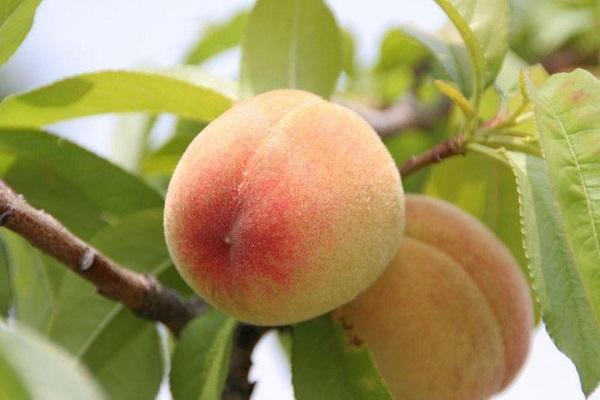
Cardinal
The tree is 2.5 meters high, the fruits reach 160 grams. The color of the peel is yellow, with a reddish tint, the pulp is juicy, the stone is easily separated.
The hybrid is considered a high-yielding variety, the frost resistance indicator is average, the tree tolerates low temperatures - from -18 to -20 degrees without loss. In case of lowering the temperature limit, the trunk freezes. The advantage of the hybrid is considered resistance to diseases and insect infestations.
How to grow a peach
After making a decision to grow a peach, a crucial period begins in preparation for planting a peach tree in a personal plot. In some cases, the preparation of the selected site begins several years before planting.
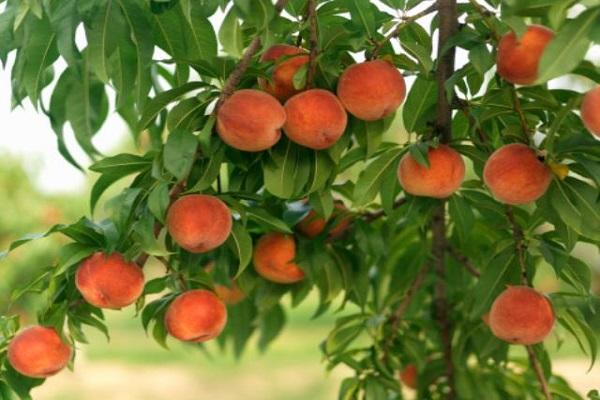
Site selection and preparation
A suitable site for growing peaches is considered to be near the building, on the south side. Here the trees will receive enough sunlight and will also be saved from drafts.
To extend the adaptation period, it is customary to plant a peach in spring. The planting hole begins to be prepared in the fall. About 10 kilograms of humus are added to the top layer of the soil. Then the earth is dug up, after a few weeks the procedure is repeated. The planting hole is dug according to the formula 60 by 100 centimeters. In the spring, the hole is updated and planting begins.
Variety selection
Peach varieties for the Middle Lane are chosen according to the characteristics of frost and winter hardiness. The lower the temperature in the region, the higher the frost resistance index of the peach variety should be.
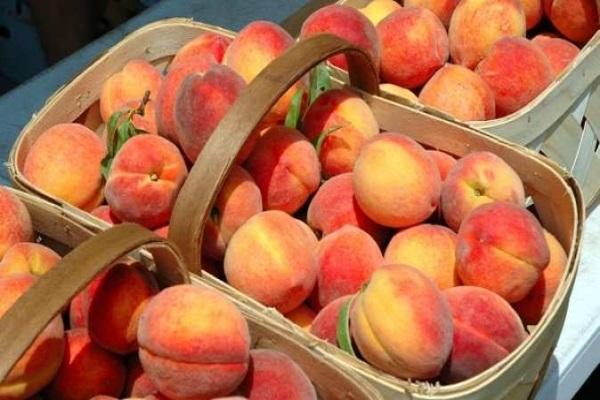
Planting seedlings
Spring planting begins after the hole is renewed. Mineral complexes with a high content of phosphorus and boron are added to it. The seedling is buried in a hole, spreading the roots and removing damaged areas. The root collar of the seedling should be located 4 centimeters below the top layer of the soil. The seedling is set vertically, the roots are sprinkled with earth, the soil is compacted at the base and tied to a previously prepared support.
After planting, the seedling is watered abundantly and the soil is covered with mulch.
Subtleties of wood care
After planting, an adaptation period begins, during which the seedlings are left alone.

Formation
For areas with low winter temperatures, bowl pruning of the peach tree is recommended. This is necessary in order to increase the defenses of the peach.
Formation begins immediately after planting the seedling: it is cut off, leaving 20 centimeters. Over the summer, he must increase the supply of wood, restore the trimmed crown.
- Spring pruning is carried out after the end of frost, damaged branches are removed.
- Autumn pruning is needed for the peach tree for adjustments.
Top dressing and watering
During the growing season, peach trees need regular feeding. At the beginning of summer, minerals are added to the soil. Additional feeding with phosphorus is carried out if the tree hesitates to form an ovary.Peaches are watered regularly starting in April. When drought occurs, make sure that the soil is not too dry.
Information! A prerequisite is the introduction of top dressing in the spring, at a time when trees are especially vulnerable.

Preparing for the winter period
The culture needs additional shelter by the time the first frosts begin.
Frost protection is a two-level shelter system:
- The soil is mulched with coniferous needles or sawdust.
- The aerial part is covered with plastic wrap or agrofiber.
The trees should be covered by the end of November. Before that, they are treated with Bordeaux liquid and spilled. Additional windings with agrofibre are used to insulate the trunk.
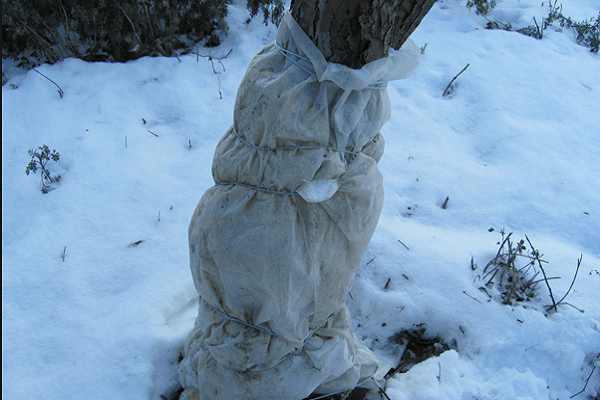
Disease and pests
Fruit and berry crops of the stone type often develop moniliosis. This fungal-type disease is spread by bees and affects trees during flowering. The main signs of moniliosis:
- damaged, dried leaves;
- falling buds;
- yellowing.
The agronomists have developed a plan that includes the stage-by-stage processing of trees. First, peaches are treated with fungicides, then sprayed with solutions containing potassium and phosphorus.
Powdery mildew is a fungal infection that infects the leaf blades, shoots and fruits of peaches. Young trees are most susceptible to this disease. The first sign of powdery mildew is a whitish coating on different parts. Then the leaves begin to roll into tubes, white spots resembling mold appear on the formed fruits. Peaches start to rot, part of the crop becomes unfit for food.

The pores of the fungus can hibernate in the soil at low temperatures, therefore, the fight against powdery mildew is reduced to the destruction of the infected parts of the plant, the rest are treated with a solution of colloidal sulfur.
Many fruit and berry crops are subject to aphid infestation. Aphids are a small pest that multiplies on the underside of leaf plates, eats buds. To get rid of the parasite, folk remedies are used. A good method is processing with soap solutions, as well as tobacco infusion.
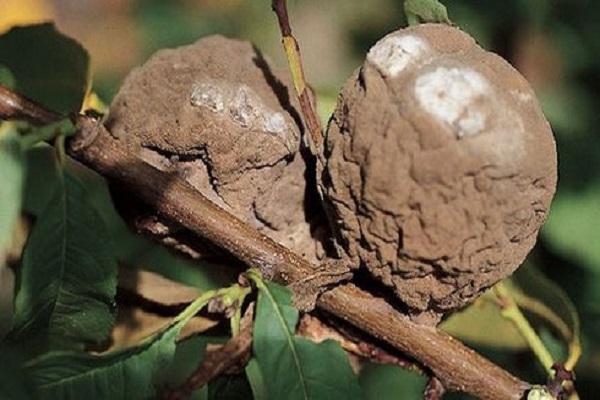
Peach propagation
When choosing a variety, it is necessary to take into account the ability of a peach to self-pollinate. With self-pollination, amateurs can propagate peaches by cuttings. This is the most effective and simple way when a cutting is removed from the main tree, rooted and planted in a permanent place for further growth.
Harvesting and storage
Peaches reach technical ripeness by mid-July. From this point on, a phased collection of fruits begins. Ripening of each individual fruit can be uneven, so gardeners recommend looking at the appearance of the peach.
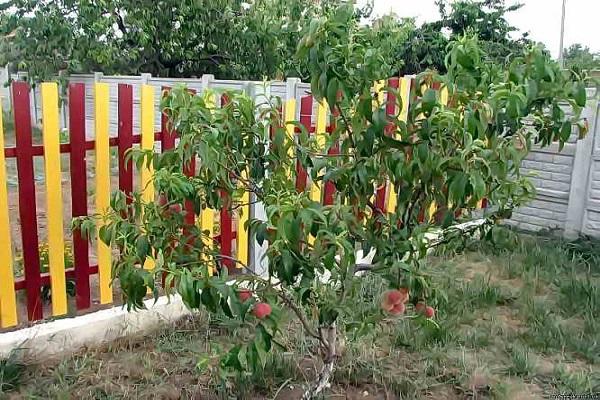
Not fully ripe fruits are chosen for long-term storage. They can ripen within 2 weeks at temperatures from 0 to +5 degrees. At room temperature, peaches, depending on the variety, can be stored for 5 to 10 days. For longer storage, the fruits are individually wrapped in parchment paper and placed on the flooring of wooden boxes.
Advice! Plastic bags are not suitable for storing peaches. The resulting condensation contributes to fruit rotting.
Proper care and selection of a hybrid variety allows you to grow peach trees in areas that, at first glance, are not suitable for growing sunny fruits.
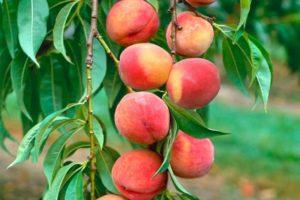
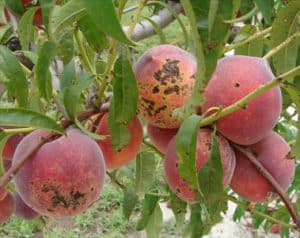
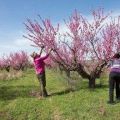
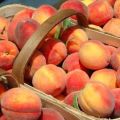
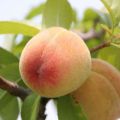
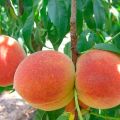

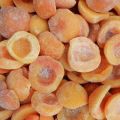
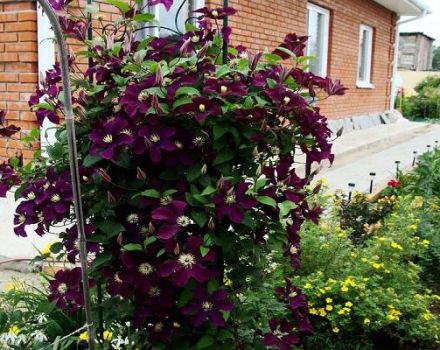
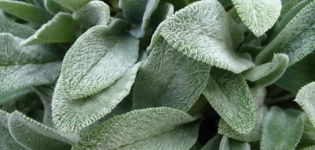
Thank! Very clear and well written.